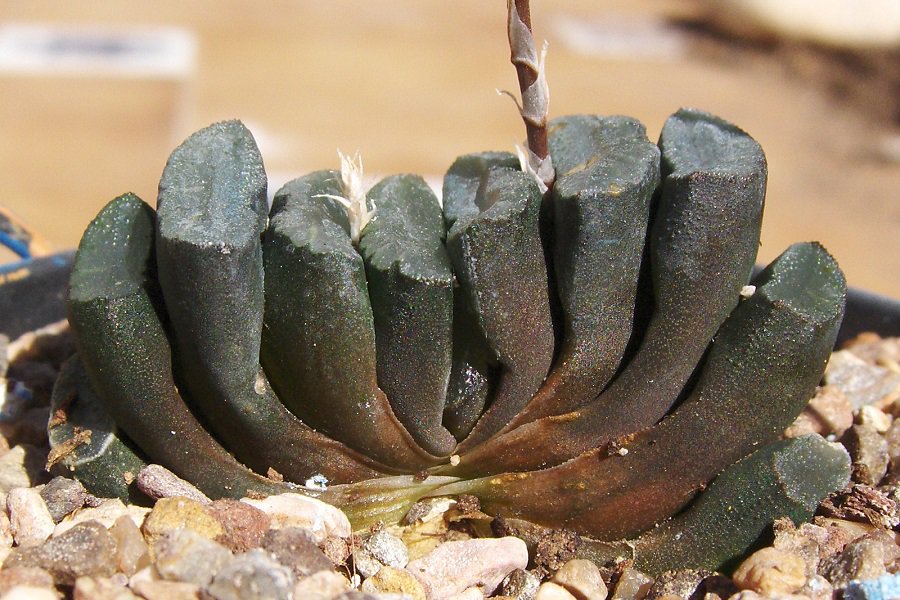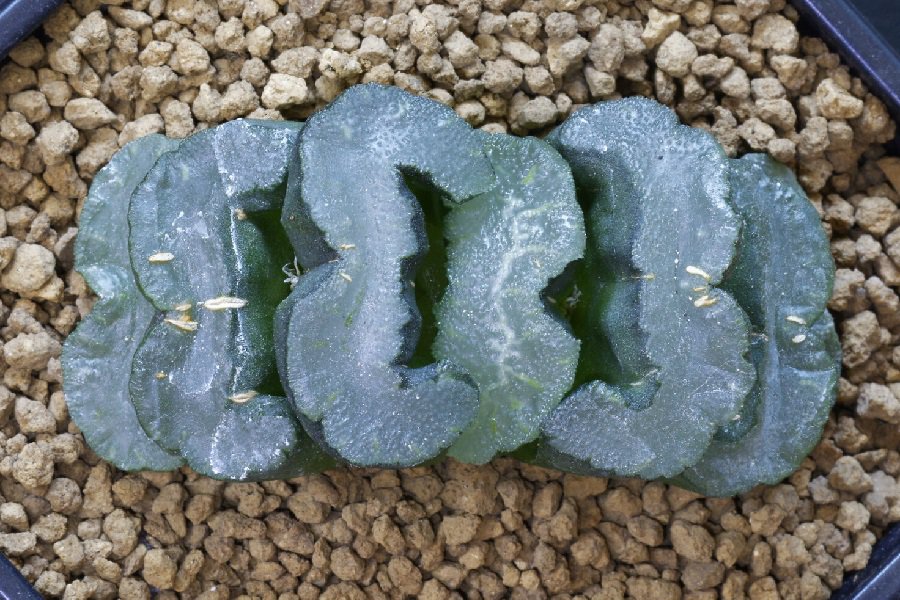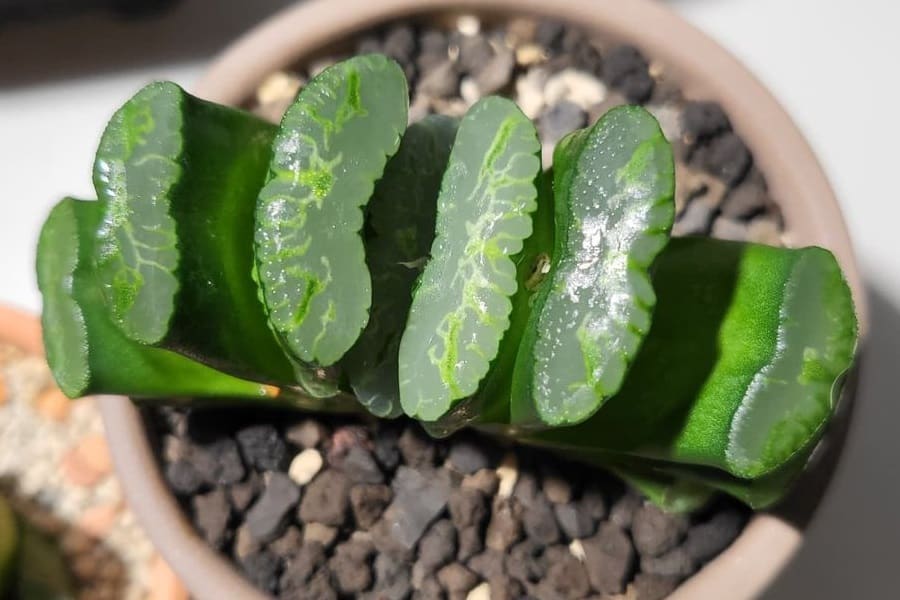Haworthia truncata 101: Care and Propagation Simplified
Imagine a tiny plant that looks like a cluster of green teeth peeking out from the soil. That’s the Haworthia truncata for you! Also known as the “horse’s teeth” plant, this succulent native to South Africa is a showstopper despite its diminutive size. Reaching just 2 inches tall and 10 inches wide, it’s a perfect option for those with limited space or for succulent enthusiasts who love unique, quirky plants.

With dark green or grayish-green rectangular leaves arranged in neat rows, the Haworthia truncata boasts a striking appearance. The leaves have a rough texture and are adorned with white lines running through the center, adding to their allure. And that’s not all – the translucent leaf surfaces give the plant an almost otherworldly glow. When it blooms, the white, clustered flowers, though small and inconspicuous, are a delightful sight.
Related Post:
20 Types of Haworthia With Pictures
Contents
Haworthia truncata Care Guide
Light
The Haworthia truncata loves bright, indirect sunlight. Too much direct sun can scorch its leaves, causing them to shrivel and discolor. If growing indoors, place it near an east or west-facing window where it receives ample morning or evening sun. During the summer months, you can move it outdoors to a partially shaded spot, gradually acclimating it to the outdoor conditions. A rain-protected area is ideal for preventing waterlogged soil. In winter, when growth slows down, supplement with grow lights to ensure the plant receives enough light.
Soil

Creating the right soil mix is crucial for the Haworthia truncata’s well-being. This succulent thrives in a well-draining, mineral-rich substrate that mimics its natural habitat. An excellent potting mix can be made by combining 1 part sharp sand or perlite with 3 parts coarse potting mix or succulent soil. Avoid heavy soils like clay or those high in peat moss, as they can retain too much moisture. Adding pumice, lava rock, or expanded shale can further improve drainage and aeration.
Water
As with most succulents, the Haworthia truncata is quite drought-tolerant but can’t survive extended periods of dryness. During the active growing season from April to November, water the plant thoroughly, allowing the top few inches of soil to dry out before watering again. Avoid watering during the hottest months of July and August when the plant goes into a resting period. Instead, lightly mist the leaves to maintain humidity. In winter, reduce watering significantly, letting the soil become almost completely dry before rehydrating. Never water directly into the rosette, as trapped moisture can lead to rot.
Fertilizer
Feed your Haworthia truncata with a diluted cactus or succulent fertilizer every month during the growing season. Avoid over-fertilizing, as it can lead to stretching and deformities in the plant.
Planting and Repotting
Haworthia truncata does best when planted in shallow, well-draining containers. Group plantings are perfectly fine and can create a striking display. When repotting, choose a slightly larger pot only if the rosettes have completely covered the soil surface. Early spring, at the beginning of the growing season, is the ideal time to repot. Gently remove any dead or dying leaves during this process.
Pruning
This succulent requires minimal pruning. Simply remove any dried or discolored leaves as needed. You can also take cuttings for propagation if desired, but avoid excessive trimming.

Overwintering
Haworthia truncata is quite hardy and can overwinter without issue. Keep the plant in a cool, frost-free environment between 40-60°F. Some varieties may even tolerate brief exposure to temperatures slightly below freezing. Reduce watering during this period, only providing water when the soil is completely dry. Warmer indoor temperatures above 65°F may require supplemental lighting to prevent etiolation.
Pests and Diseases
While diseases are rare, the Haworthia truncata can occasionally fall victim to common houseplant pests like mealybugs, scale insects, and root mealybugs. Inspect the plant regularly, paying close attention to the tight rosette centers where pests often hide. Treat any infestations promptly with an appropriate insecticide or organic solution. Most issues arise from overwatering and poor drainage, so taking care to avoid those problems will go a long way in keeping your plant healthy.
Haworthia truncata Propagation
This little succulent is an absolute pro at reproducing! You can easily propagate new plants through offsets (pups), leaf cuttings, or seeds.
- Offsets: Gently twist off any offsets with roots from the mother plant. Allow the wounds to callous over for a few days before replanting in fresh, well-draining soil.
- Leaf Cuttings: Carefully remove a healthy leaf from the plant, allowing the cut end to dry for 2-3 days. Lay the leaf flat on a succulent potting mix and keep the soil lightly moist. In a few weeks, you’ll see new plantlets emerging from the leaf.
- Seeds: Sow seeds in a fine, well-draining seed-starting mix. Keep the soil evenly moist and provide temperatures between 60-70°F. Once seedlings appear, gradually reduce watering to prevent damping off.
With proper care and a little patience, your Haworthia truncata will reward you with a plethora of new plants to share or expand your collection!
